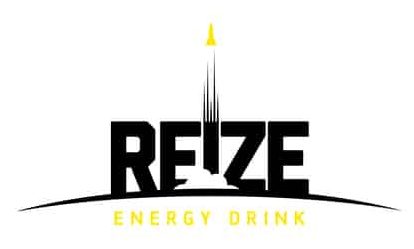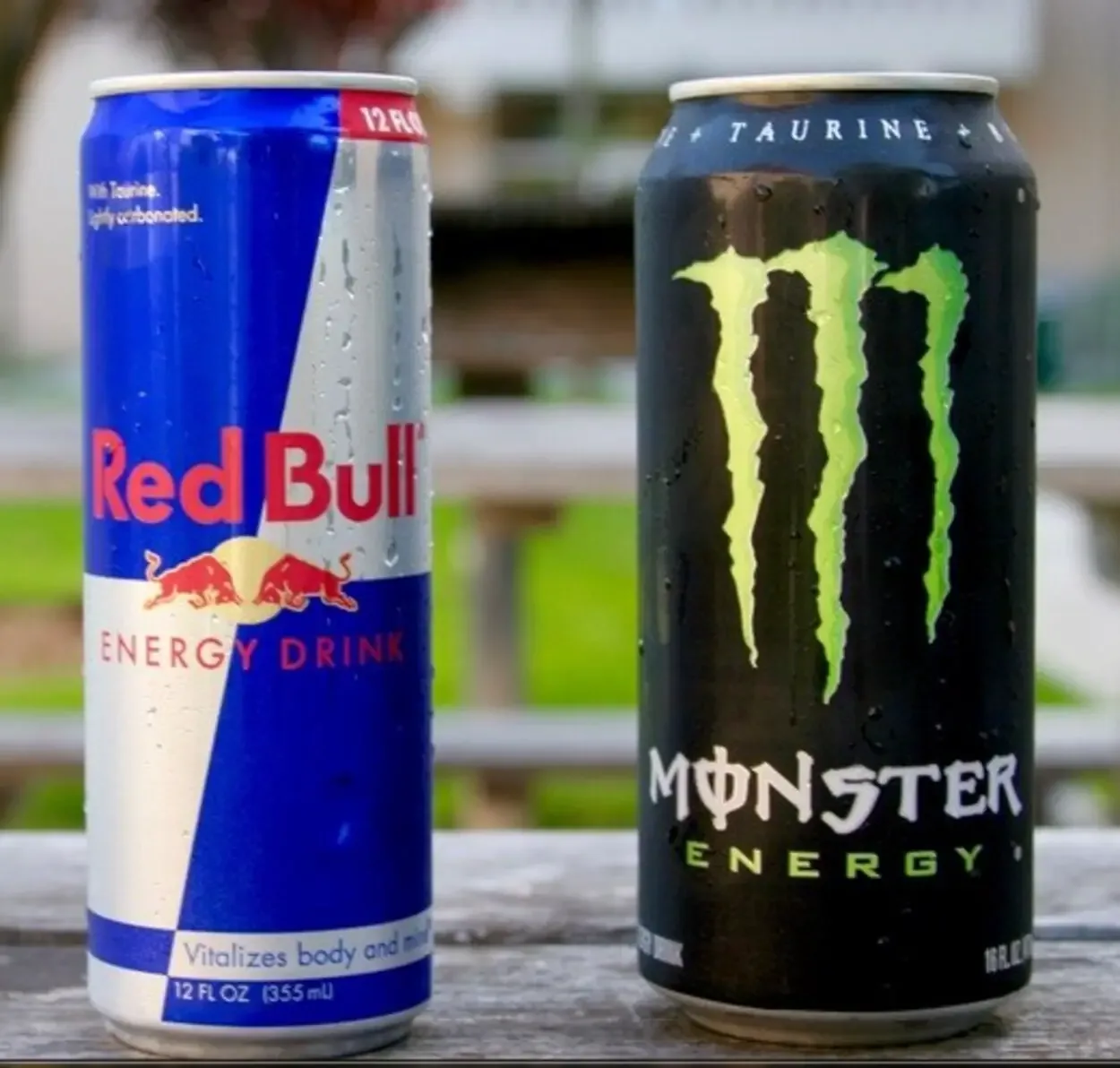Ever wondered what the biggest differences between Monster energy drink and Red Bull are?
We put the two famous energy drinks head to head to help you decide which is better.
Overall, Monster (190mg) has more caffeine than Red Bull (80mg). Both drinks contain some added sugar and substantial calories, which make them suitable for those who regularly do workouts.
However, Red Bull may be more suited to caffeine beginners and less physically-demanding activities such as studying.
Read on to know more about their key differences!
What is Monster Energy Drink?
Monster is an energy drink produced by an American company, the Monster Beverage Corporation. It comes in a 16 fl. oz can, and contains 190 calories and a total of 11g of carbohydrates per serving.
Over the years, Monster energy drink has been associated with certain health risks such as cardiac arrest, due to some individuals consuming it in excess. However, moderate consumption does not usually have any negative side effects.
Where is the Monster energy drink made?
Monster energy drink is made in Corona, California.
The Monster Beverage Corporation (previously the Hansen Natural Company) has a long history of making all types of sodas and juices, before branching out to energy drinks in 2002.
The company is a strong supporter and sponsor of many extreme sports events, such as snowboarding, skateboarding, UFC, Moto GP and BMX. They also sponsor certain music bands like Fetty Wap, Iggy Azalea and 21 Savage Pilots.
Monster Energy Drink Ingredients
Each 16 fl. oz can of Monster contains:
- 190 calories
- 54g carbohydrates
- 52g of sugar
- 160mg of caffeine
- Vitamin B2 (230% of the recommended daily intake)
- B3 Vitamins (230% of the recommended daily intake)
- Vitamin B6 (230% of the recommended daily intake)
- B12 vitamins (230% of the recommended daily intake)
It also contains trace amounts of:
- Carbonated Water
- Glucose
- Citric Acid
- ‘Natural Flavours’
- Taurine
- Sodium Citrate
- Panax Ginger Extract
- Sorbic Acid (preservative)
- Benzoic Acid (preservative)
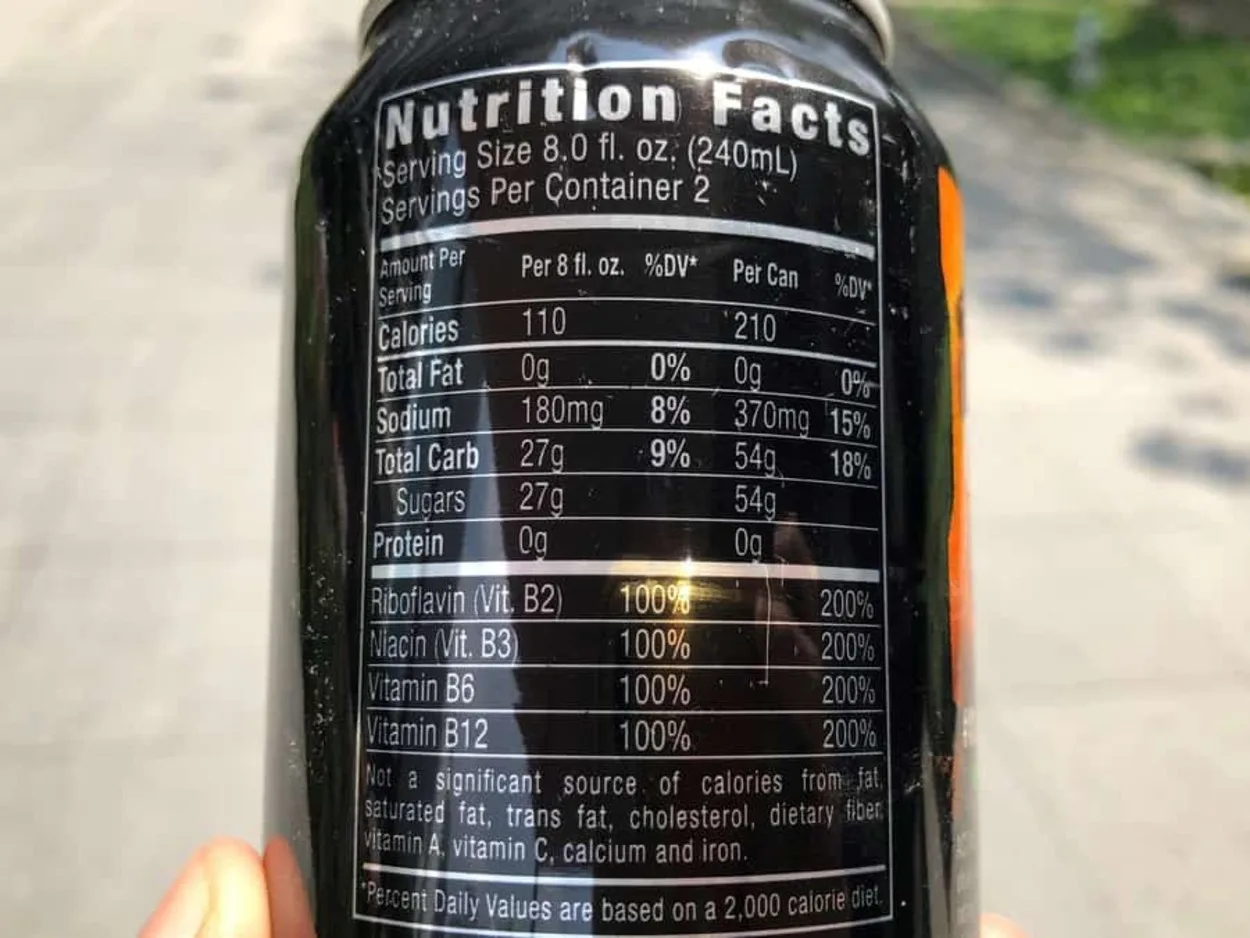
Check out my other article where I cover in a lot more detail whether Monster energy drink is bad for you or not.
Can you drink Monster every day?
Yes, you can drink Monster Energy drink every day, but you should be mindful of how much sugar you’ll be consuming.
You may prefer to choose Monster Ultra Zero as a potentially better option.
I’ve written everything you need to know about what happens when you drink Monster every day in another article. Check that out if you’re considering making Monster your daily energy drink of choice.
What is the Red Bull energy drink?
Red Bull energy drink is produced by an Austrian company, Red Bull GmBH. It comes in an 8.4 fl. oz can, and has 110 calories.
Red Bull has the highest market share of all energy drinks produced.
Red Bull is made in Austria.
Most other energy drinks like Monster or other well-known brands are typically made in America. Red Bull is distributed in 171 countries all over the world.
Red Bull Ingredients
Each 8.4 fl. oz can of Red Bull contains:
| Ingredients | Amount |
| Caffeine | 80 mg |
| Glucuronolactone | 600 mg |
| Niacin (Vitamin B3) | 5.1 µg |
| Pantothenic acid (Vitamin B5) | 5.1 µg |
| Pyridoxine (Vitamin B6) | 5 mg |
| Cobalamin (Vitamin B12) | 5.1 µg |
It also contains trace amounts of:
- Carbonated Water
- Sucrose
- Glucose
- Citric Acid
- Taurine
- Sodium Bicarbonate
- Magnesium Carbonate
- Unspecified Natural and Artificial Flavours and Colours
Like Monster, you can also drink Red Bull every day. In fact, millions of people do exactly that.
I’ve covered everything you need to know about what happens when you drink Red Bull every day in my other article.
What’s the difference between Monster and Red Bull?
The main differences between Monster and Red Bull are the higher sugar and carbohydrate content in Monster, and the size of the can that they come in – Monster being 16 fl. oz and Red Bull being 8.4 fl. oz.
Monster Energy comes in 34 different flavours, and has some extra coffee-based flavours, while Red Bull only has 16 flavours, which are all fruit-based.
The sections below should give you an even more detailed breakdown of their specific differences and similarities.
Monster vs. Red Bull (Ingredients)
Sugar Content
Monster contains 52g of sugar / 16 fl. oz, while Red Bull contains 27g of sugar / 8.4 fl. oz.
This is really high sugar content – one can of Monster is equivalent to nearly two whole cans of Red Bull!
A large part of the energy is definitely derived from this sugar, which is why Monster may seem more effective than Red Bull.
Per fluid ounce, Red Bull and Monster contain almost exactly the same amount of sugar.
B6 Vitamins
Red Bull contains 250% of the recommended daily intake of B6 vitamins, while Monster contains 230%, just 20% less.
B6 vitamins are water-soluble vitamins like B12, which are processed in the liver, and then passed out from the system.
Carbohydrates
Monster Energy contains 54g of carbohydrates, and Red Bull has 28g of carbohydrates.
Like the sugar content, Monster has around double the amount of carbohydrates that Red Bull has, so anyone on a diet should stay well away!
Try some of their lighter alternatives, which I’ll list below.
Monster vs Red Bull- Flavours
Monster energy drinks come in the following flavours that can be separated into different categories:
- Regular Monster (also comes in low-carb, Assault, and Absolutely Zero)
- Rehab (non-carbonated and less sugar, includes white dragon tea, lemonade, peach tea, pink lemonade, orangeade, and raspberry tea)
- Ultra (low-calorie drinks, including zero, blue, red, sunrise, citron, black, and violet)
- Juice (supposed to taste more like juice, have these flavours: Khaos, Pipeline Punch, Ripper, and Mango Loco)
- Punch (a mixture of several fruits, comes in Baller’s Blend and Mad Dog)
- Java (Coffee-based drinks, come in: Mean Bean, Loca Mocha, Kona Blend, Irish Blend, Vanilla Lite, Salted Caramel, Espresso Monster: Cream, Espresso Monster: Vanilla, and Caffe Monster in Vanilla, Mocha, and Caramel)
- Muscle (the base energy drink with added protein, comes in Chocolate and Vanilla)
- Hydro (is supposed to be an alternative to both energy drinks and water, is just flavoured water: Tropical Thunder, Purple Passion, Blue Ice, Zero Sugar, Mean Green, and Manic Melon)
- Maxx (uses nitrous oxide, flavours include: Super Dry, Eclipse, and Solaris)
Red Bull comes in the following flavours:
- Original (amber)
- Sugar-free (reduced calories)
- Total Zero (no calories)
- Red (cranberry)
- Ruby/Red (grapefruit)
- Blue (blueberry)
- Yellow/Tropical (tropical fruit)
- Orange/Mandarin (mandarin/orange)
- Green/Kiwi (kiwi-apple)
- White/Coconut (coconut berry/acai)
- Peach (peach-nectarine)
- Pear Sugar-Free (pear)
- Lime Sugar-Free (lime)
- Purple/Acai Sugar-Free (açai)
- Purple/Acai (acai berry)
- Lime (lime-lemon)
- Orange Sugar-free (orange)
- Yellow/Tropical Sugar-free (tropical)
- Winter Edition (plum-cinnamon)
Monster vs Red Bull (Caffeine)
Monster Energy contains 160mg of caffeine per 16 fl. oz (80mg / 8 fl. oz), while Red Bull stands at 80mg of caffeine per 8.4 fl. oz.
This is one of the most significant areas in which the two differ. From a simple comparison, we can see that Monster contains twice the amount of caffeine that Red Bull does.
But hey, I hear you say. That’s not fair, Monster is almost twice the size of Red Bull!
That’s true.
So if we look at half a can of Monster (8 fluid ounces) we can see that it has the same amount of caffeine that Red Bull has in 8.4 fluid ounces.
This means that Monster is slightly stronger than Red Bull per fluid ounce, but there’s really not much in it.
The main reason that Monster contains significantly more caffeine than Red Bull in total is that a can of Monster is around double the size of a regular can of Red Bull.
If you were to drink an entire Monster can in one go, that would put you very near to half of your daily recommended intake, while a single Red Bull would have around the same amount of caffeine as a cup of coffee.
Even so, both Red Bull and Monster contain much less caffeine per can than some of the strongest energy drinks available.
Does Monster or Red Bull give you more energy?
Logically speaking, Monster Energy should definitely give you more energy.
When compared to Red Bull in aspects such as caffeine and sugar content, Monster consistently wins out and is overall, a far bigger can than Red Bull.
However, more energy is not necessarily a good thing, depending on what you’re doing – through a combination of ingredients, these drinks make your brain think you are awake when really, your body is not.
If you chug a whole can of Monster in one go, you might even suffer heart palpitations, anxiety or insomnia, especially because your brain and body are out of sync.
That’s true of all energy drinks, if you drink them in excess they can have nasty health risks associated with them.
Monster vs Red Bull (Price)
It’s usually around $37.95 for a 12-can pack of Monster energy drink on Amazon, which means that it’s around $3.20 for a can, excluding shipping. For Red Bull, it’s about $2 per can, without considering shipping.
In this case, Monster is definitely more expensive than Red Bull, but we have to take into account the size of the can as well – it’s double the volume of Red Bull, so you’re more or less paying for two Red Bull cans.
If both of these options still seem rather pricey, you can check out REIZE Energy Drink– an upcoming and newer energy drink that costs only about $1 per drink and ships directly to your door.
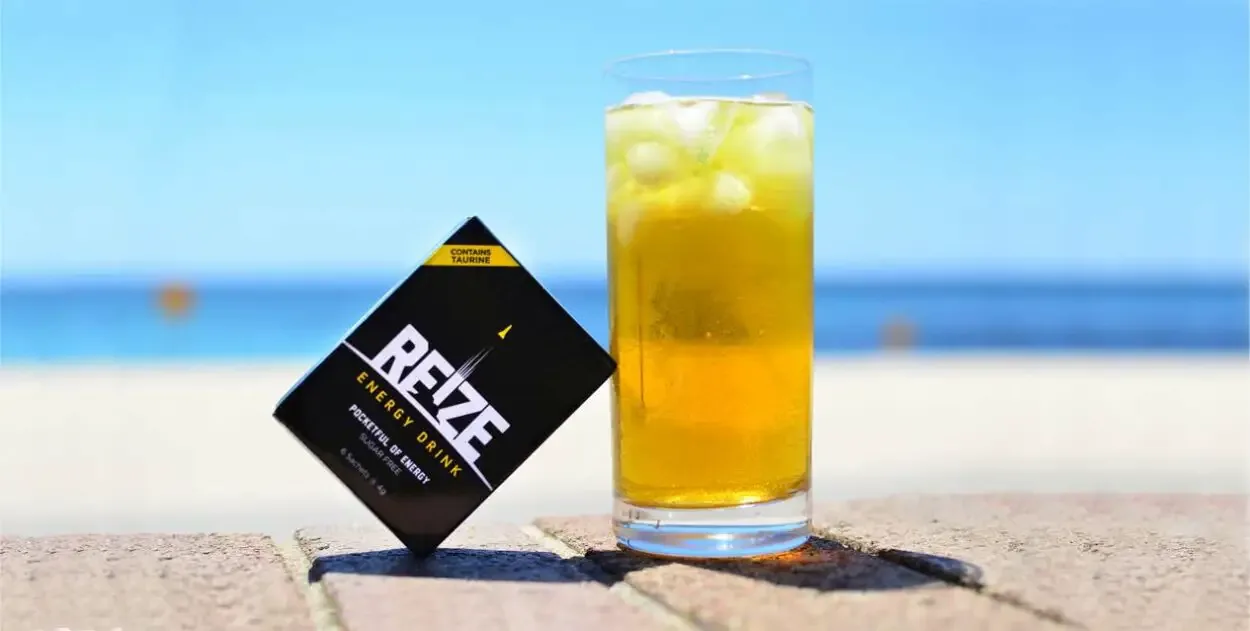
Monster vs Red Bull – Review
* All opinions expressed in this review are mine *
For the sake of clarity, I decided to try both the original flavours of Monster and Red Bull, rather than messing around with different kinds of flavours.
Full disclosure, I was already quite familiar with Red Bull, as I usually do drink at least half a can before an important exam to make sure that I’m fully alert, regardless of if whether it’s early in the morning or late in the afternoon.
I had never tried Monster before because it always seemed too big and somehow a bit scary – but for the purposes of science and comparison, I was willing to give it a try.
Visuals
Monster
My first impression of the Monster is that it was definitely an energy drink. The big ‘M’ is a trademark sign, and even out of context, I would definitely be able to place it.
The minimalist design – only a single green letter against a totally black background was attractive and seemed very professional.
The colour of the drink reminded me of Red Bull, and it was pretty carbonated when I opened it.
Red Bull
Like the Monster drink, this packaging was instantly recognizable. The minimalist blue and silver colour scheme was pleasing and perhaps a little less scary than the Monster can, but still just as effective.
The Red Bull silhouette is a classic design, and I found it really cool that the snap-top cutout had a little bull on it too.
It was also very carbonated when I opened it and was a neutral amber colour.
Taste
Monster
Since the liquid pretty much looked like Red Bull, I assumed it would taste pretty much the same.
Wrong.
The texture of the drink was a lot thicker than Red Bull, and it tasted so sweet that I felt my saliva ducts twinge with pain, with a pungent citrus undertone that was just as artificial as Red Bull.
The flavour of the drink was not unpleasant, but it was nothing special either. If you reduced the sugar content and made me compare this and Red Bull while blindfolded, I think I would find it quite hard to tell the difference.
I pushed through the first couple of sips, but eventually, it was so sweet that I had to take a break, after barely drinking a quarter of the can. It felt like I was developing cavities on the spot!
One thing I did like about the taste was the pleasant, medium fizziness of the drink – it didn’t have the sharpness of something like Coke, but was not entirely flat either, letting you enjoy the tingle on your tongue without feeling like the drink was actually attacking you.
Red Bull
I definitely had to wait a couple of hours for my body (and taste buds) to recover from Monster, but in any case, this was familiar territory.
The taste of Red Bull was sharp and clear, quite sweet, but still not as sweet as the Monster drink. It was definitely much fizzier – I had to stop between sips to catch my breath a couple of times.
The aftertaste was quite sour and made me really cringe my face after the first sip, something which didn’t happen with the Monster drink – possibly because it has a lot more sugar in it.
Still, it was the classic, great taste that I remembered.
Effect
Monster
When I took my first gulp of the Monster Energy Drink, the first thing I noticed was an unpleasant feeling in my stomach. My eyes definitely felt less heavy, but I could feel my stomach trying its best to grapple with the load of sugar that had just been dumped into it.
After I got through about 3/4 of the can, my stomach settled down, and I was feeling slightly more alert than I had been. My heart was also beating pretty fast at this point, and I felt ready to run a marathon.
The effects lasted for a couple of hours, and I felt really energized, but then came the crash– the sugar wore off, and my heart slowed to its normal pace.
I did feel pretty bad after the crash, and I had to take a nap.
Side note on physical effects outside of the body- try your utmost best not to spill this.
I accidentally poured some on my hand and despite wiping it off with a tissue, there was just an unpleasant, residual stickiness that required almost two rounds of handwashing with soap to get rid of! Can’t imagine what would have happened if I spilled it on my clothes!
Red Bull
This woke me up from the sugar crash I was suffering after the Monster energy drink and was quite refreshing.
Somehow, it gave me a rush of adrenaline, a nagging feeling at the back of my mind, as if I had forgotten something I was supposed to do. (Was that because I subconsciously associated Red Bull with taking exams?)
Final Thoughts
Overall, I would give the Monster energy drink a 6/10 – it was too sweet for my liking, but I could definitely see how people who did lots of high-energy activities like rock climbing or running would enjoy the extra energy boost.
The Red Bull gets a higher score- 8/10, partly because it’s gotten me through so many exams in the past.
Both energy drinks are clear leaders in the industry and it’s easy to see why- both provide a strong energy boost at an affordable price and have been around for many years.
However, the high sugar and carbohydrate content is a huge barrier to truly enjoying these drinks, because you have to consider your health as well.
Have other questions about Red Bull?
I’ve put together this epic Red Bull resource directory where you’ll find everything you could ever want to know about the Red Bull energy drink.
Alternatives to Monster and Red Bull
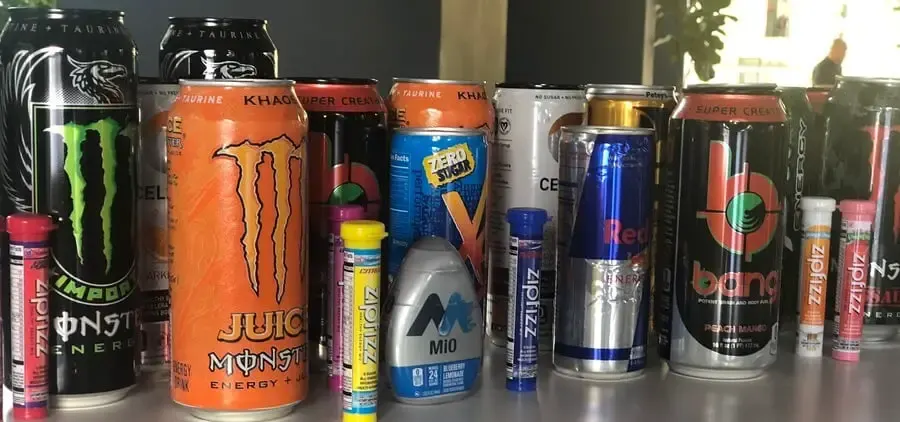
If you’re looking for some great alternatives to Red Bull and Monster, you could try:
- Rockstar
- Bang
- Celsius
- Monster Import (it’s a bit different from the original Monster)
- Rip It
- Bing
- Guru
- Xyience
If you’re thinking of branching out into powder-based energy drinks, take a look at these:
- Gfuel
- Zipfizz
- Advocare Spark
- REIZE (10 out of 10)
Energy drink powders are overall more affordable, easy to make, and give you the same energy boost that many liquid-based energy drinks do.
REIZE (10 out of 10)
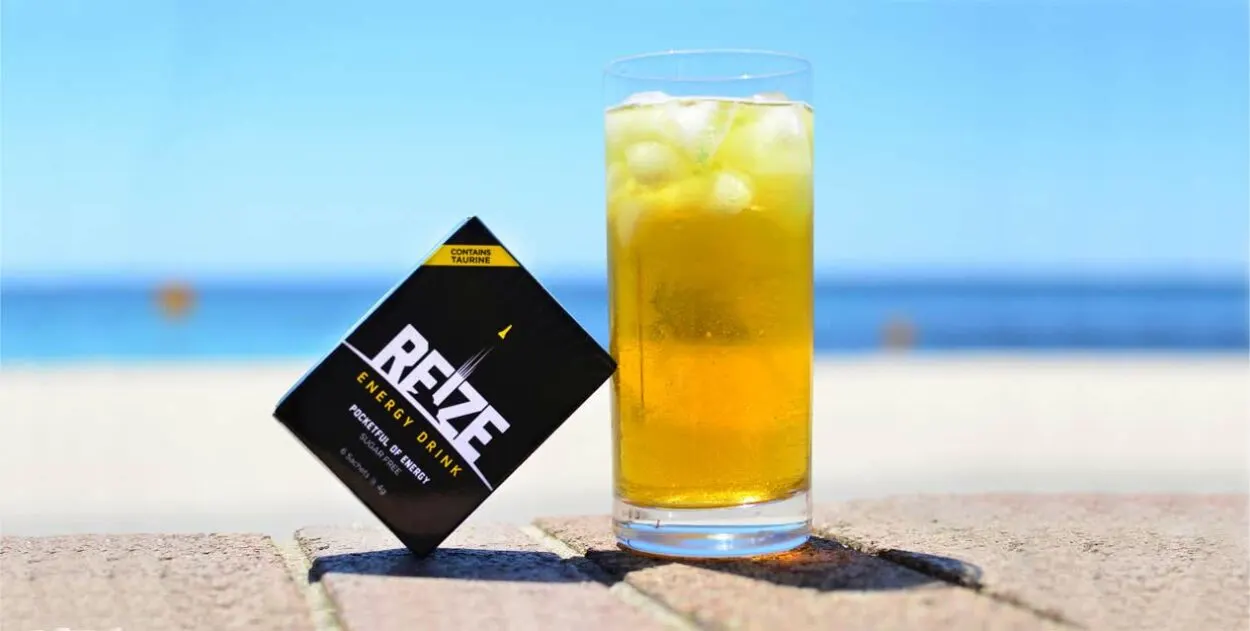
Check out REIZE for an energy powder drink that puts you in the optimal zone without any unwanted side effects like shakiness or an unpleasant crash.
REIZE ships right to your door for around $1 per drink, which is a lot more affordable than either Red Bull or Monster.
Give REIZE a try today and you might just find that you prefer REIZE to both Monster and Red Bull.
